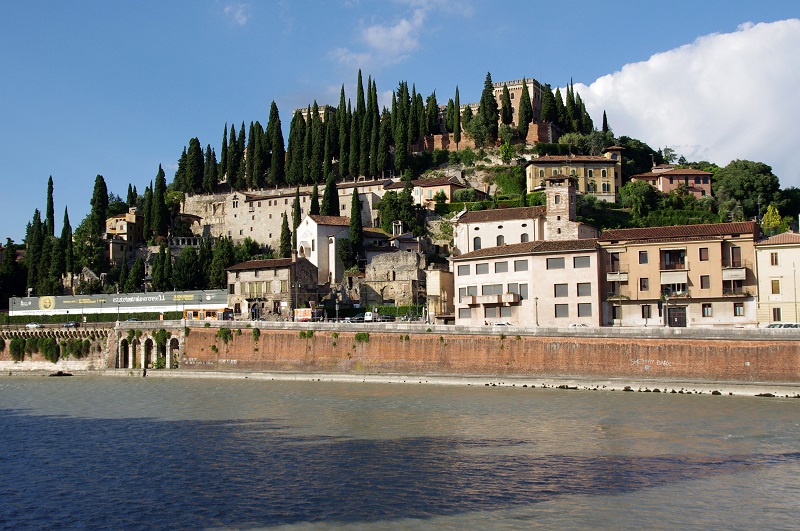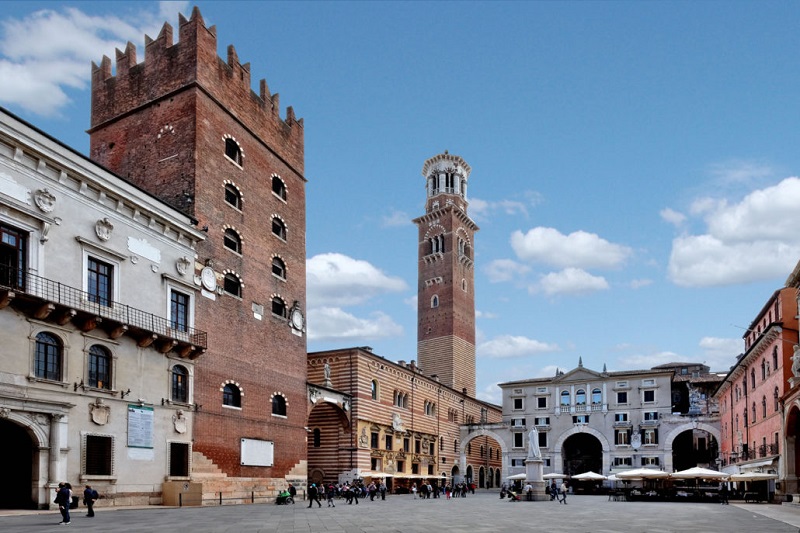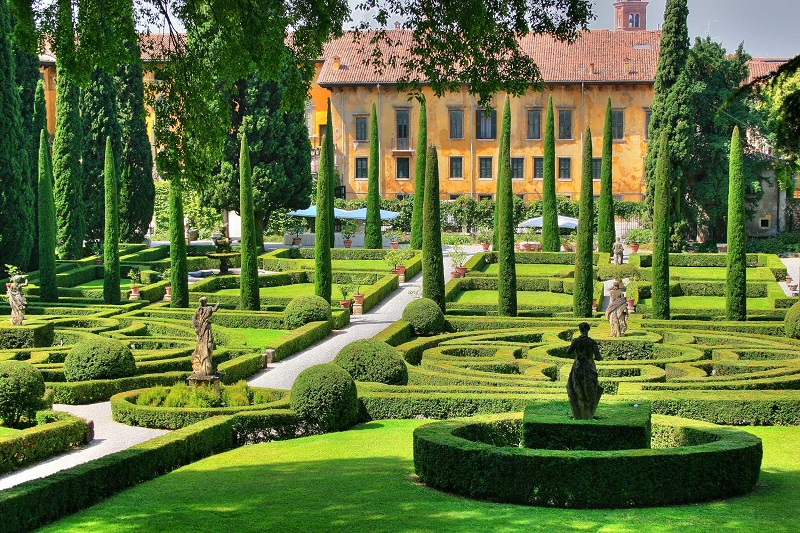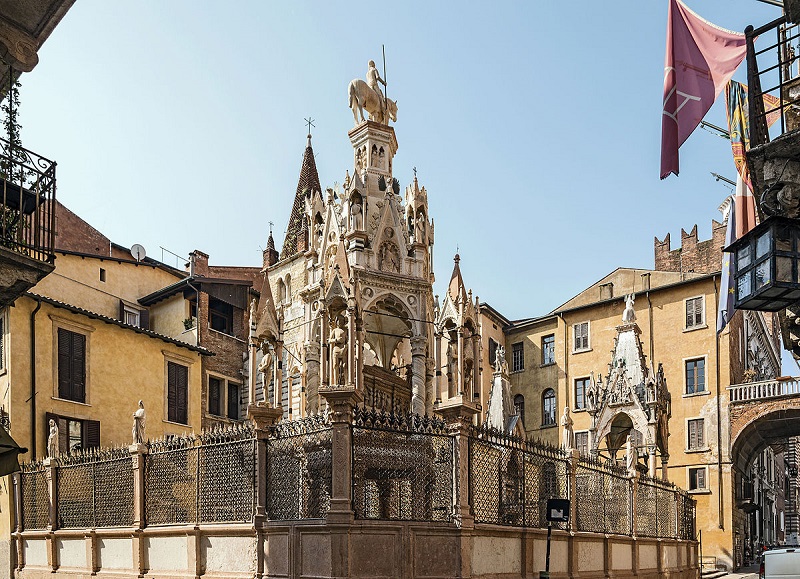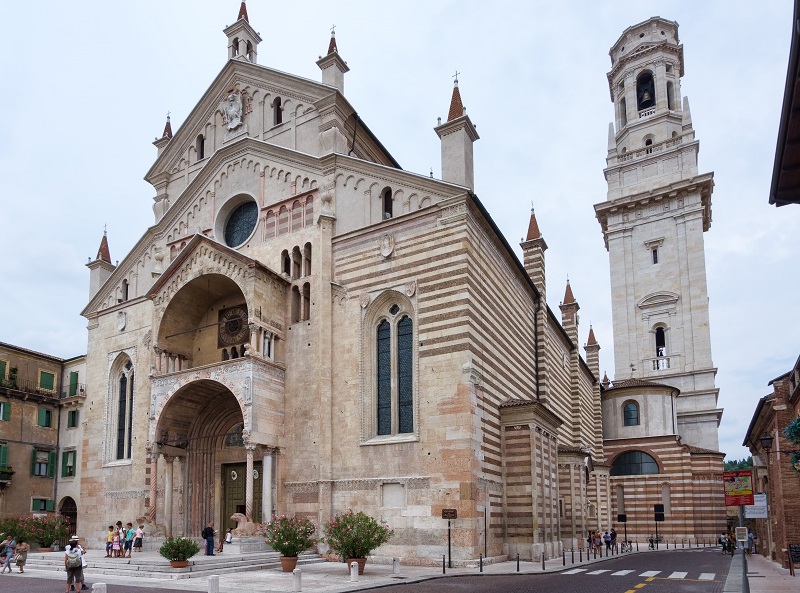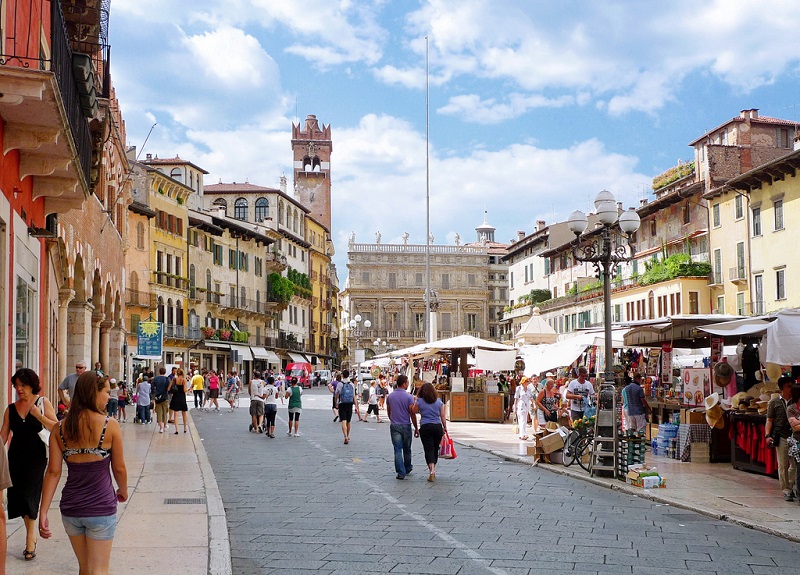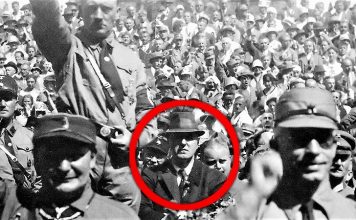Castel St Pietro
Source: Link
Picturesque structure yet an abandoned one, this fort is located on the hill behind Ponte Pietro. This beautiful view features tree-lined avenues of cypress trees as well as a body of water below. Click the next ARROW to see the next image!
Torre dei Lamberti
Source: Link
Situated at the back of Piazza delle Erbe, this is one of the few remaining towers of the city and has a marble top. Construction was started in 1171 and rang once to notify the people in case of fire and twice to summon war councils. Click the next ARROW to see the next image!
San Fermo Maggiore
Source: Link
This is an 11th century church in Romanesque and Gothic styles, built over an already existing one. The former structure, constructed in the eighth century, was to honour saints Fermo and Rustico who were martyrs. Today, this lower part of the structure is Roman architecture, with the façade adourned with marble, while the upper part is Gothic and built from the 13th to 14th centuries. The interior is the home of a wooden crucifix from the 14th century and frescoes. Click the next ARROW to see the next image!
Castelvecchio and Ponte Scaligero
Source: Link
Linked to Ponte Scaligero, a 14th century bridge that serves as an escape to the country side, the castle is believed to be situated on a Roman fortress and built between 1354 and 1355. The towers of the castle give views of the bridge and the city. Today, this structure is a museum and gallery, with a restored interior. Exhibits include the collections of paintings and sculptures by Montagna, Bellini and Tiepolo, among others. Click the next ARROW to see the next image!
Giardino Giusti
Source: Link
These are beautiful gardens that have been landscaped at the back of the Palazzo Guisti, which dates back to the 16th century. Collectively, they become a serene and relaxing sanctuary lies on the hillside and boasts of a maze, grottoes and fountains. Considered as the most beautiful Renaissance garden in the country, Giardino Guisti was also frequented by Mozart and Goethe. Click the next ARROW to see the next image!
Arche Scaligere
Source: Link
Situated on the church of Santa Maria Antica, these Gothic tombs are that of the della Scala Princes, complete with fully armoured effigies. The heraldic emblem of the family has been repeatedly decorated on the wrought irons while the sarcophagus and an equestrian statue are above the door of the church. Click the next ARROW to see the next image!
Duomo di Santa Maria Matricolare
Source: Link
This 12th-century Romanesque cathedral has a 15th-century nave in Gothic style. It also has a bell tower in Romanesque base while figures of Oliver and Roland, two paladins of Charlemagne, are on the doorway of the cathedral. Other features are stunning red marbles and tomb of St. Agatha. Click the next ARROW to see the next image!
Piazza delle Erbe
Source: Link
This picturesque square is now a fruit and vegetable market but it has still maintained its beauty, with a 16th century canopy supported by four columns and a 1368 fountain with the Madonna di Verona. It is also surrounded by notable structures which include the Palazzo Mafei and Caza Mazzanti. Click the next ARROW to see the next image!
Casa di Giuletta
Source: Link
A visit to Verona is not compete without a tour at the home of Juliet as well as that of Romeo, the two lovers of perhaps the most tragic love story of all time. Shakespeare wrote a tragedy inspired by their love story and a visit to the famous Juliet’s balcony. It has a Gothic front door and a bronze statue that represents Juliet has been placed in the courtyard. Click the next ARROW to see the next image!
Arena di Verona
Source: Link
Dating back to the first century, the Roman amphitheatre has not only been an arena for gladiators but is also the venue for the Verona Opera Festival. It can accommodate around 30,000 spectators and one of the most preserved of its kind. Its exterior is covered by Veronese marble and bricks.

